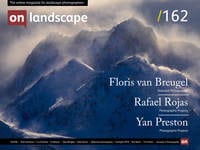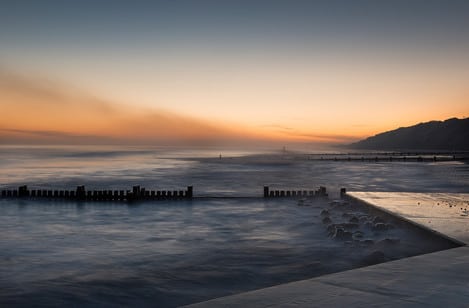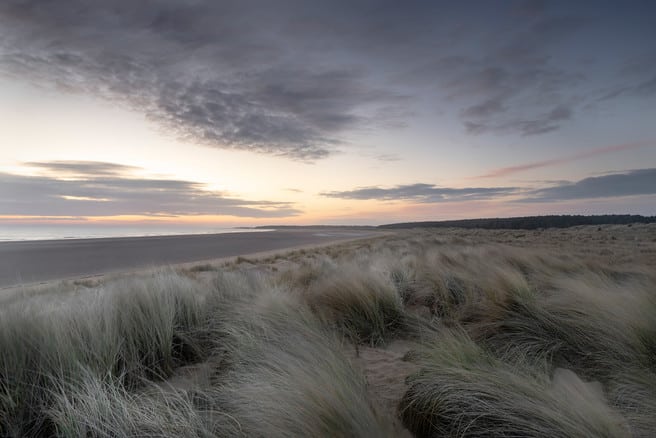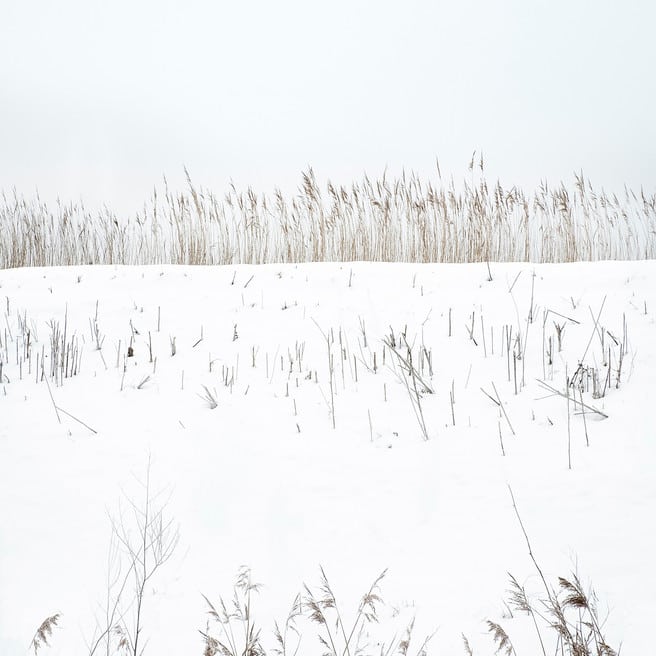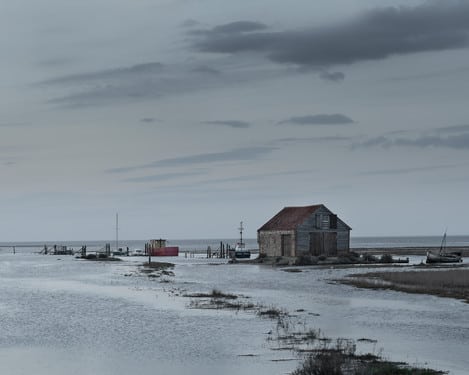The Ephemeral Landscape

Ruth Grindrod
Ruth Grindrod is a landscape photographer living in Norfolk in the UK. I like to work in a variety of landscapes but favour sea and coastal photography. I believes that the end product in photography is a quality print and this is what I strive to produce for My work has been published both in the UK and abroad.
ruthgrindrodlandscapephotography.co.uk
Norfolk and parts of Suffolk have been my home for periods totalling over thirty years. In that time, the population has risen dramatically as the popularity of both has grown. There were times when there were beaches and parts of the countryside that were empty of all, bar those who were ‘in the know’. Despite this growth, there are still areas where you can wander, be alone with your camera to find some solitude. It is these areas that I try and photograph.
The essence of landscape photography in these areas, and in particular Norfolk, for me is waiting for light that transforms these particular landscapes throughout the seasons. Many people associate Norfolk with a boring flatness, quaint old windmills and big skies. This view usually derives from a limited understanding of this large county situated in the east of England. The landscapes are in fact much more varied and much more exciting for any landscape photographer who takes the time to look and explore and who doesn't just want the classic wind pump shot with the sun setting behind it.
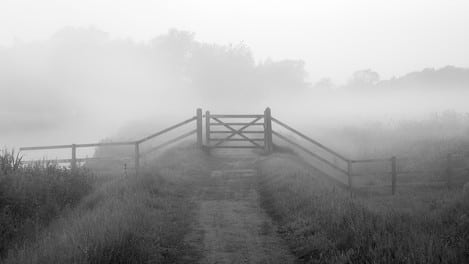 The Norfolk coastline is dynamic, changing slowly over time but also sometimes very dramatically and quickly. The cliffs at Hemsby on the north-east coast are a prime example of rapid change as large sections have completely fallen into the sea almost overnight. The Broads, by contrast, formed by the flooding of peat pits, joined by intersecting and meandering rivers, provide a gentle under-stated atmosphere.
The Norfolk coastline is dynamic, changing slowly over time but also sometimes very dramatically and quickly. The cliffs at Hemsby on the north-east coast are a prime example of rapid change as large sections have completely fallen into the sea almost overnight. The Broads, by contrast, formed by the flooding of peat pits, joined by intersecting and meandering rivers, provide a gentle under-stated atmosphere.
The quality of the light can change dramatically depending on weather conditions and seasons. Autumn, spring and summer mists frequently cloak the Broadland rivers. These provide for some transient and quite magical landscape photography opportunities which require gentle and subtle processing in order to capture the real feel of the landscape. Bordering these slow flowing rivers are habitats of reeds and grasses which sink their roots into the peat below. From a distance, these look fragile and brittle which belies the hidden strength of this vegetation. There’s a reason that Norfolk thatch for roofs is still being made from Norfolk reed. In the very early dawns of June, before the pleasure boats begin to travel up and down the rivers, this habitat is also abundant with silver thread spider webs glistening with dew coating the spider silk.
For photographers who don't want to carry a huge pack of equipment, a good 24-70mm lens or equivalent with a few key filters such as a medium 0.9 Lee grad and a 0.45 hard grad can capture a variety of scenes along the broads with ease. I use a Nikon 810 and a Fuji XT2 with a 16-55 mm lens. Both equally do a great job.
The often over-looked north-east coast is ideal for capturing dawn’s first rays as these beaches are some of the most easterly in England. Beaches such as at Overstrand and at Mundesley beach with its distinctive timber groins reaching far out into the sea provide many opportunities to experiment with different captures of the sea complemented by the sometimes pastel, or more dramatic colours of dawn skies. Long exposures can be particularly effective in this situation. The cliffs along this northeast coast, made up of glacial silts, sands, clays and gravels are highly vulnerable to coastal erosion by the North Sea. Nevertheless, these provide the photographer with a range of textures, patterns and forms to work within a landscape composition. You will probably also find that along this area of the coast, you are less likely to have to fight your corner with another ten photographers, unlike at some other iconic locations in the UK. Areas such as these do make the photographer work hard and sometimes break the ‘rules’ of photography to create an individualistic shot. It takes planning and sometimes a few return visits to get the shot as there are no dramatic mountains or valleys waiting for you. It is, however, worth the time and the experience of being often alone, and is something I cherish. When I am out here, I look for patterns and textures in the skies which will complement the simplicity of aspects like groins and shingle beaches.
The North Norfolk coast, by contrast, is well known and well shot, often in locations that require only a short walk from your parked car, for example, Burnham Overy, Brancaster Staithe and Thornham. These are beautiful locations and well worth a visit if you haven't been. However, there is a lot more to the North Norfolk coast than just a sailing boat in a muddy creek. It is worth making the moderate to long walks out to the coastline which has remained unspoilt because of sand and shingle beaches separated by intertidal mud flats and salt marshes- so no building possible on here to date! The coastal marshes have been described as the finest coastal marshes in Britain. These change in terms of height, colour and texture and are interspersed with creaks and salt pans giving a variety of tone and character. This provides the photographer with a plethora of opportunities to photograph minimalistic detail, abstract impressions and large open vistas.
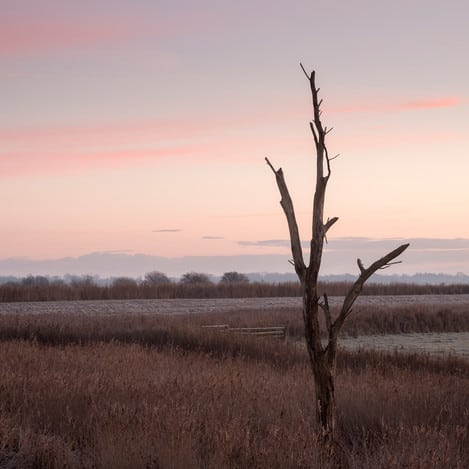 For those who want to capture some vivid colour in their landscape then make sure to visit in July when the sea lavender is a haze of purples and mauves. The miles of sand dunes after the salt marshes are home to marram grasses which again can be a real playground for any landscape photographer as they can be the foreground, the centre or the backdrop for your coastal shot. Occasionally you may be lucky enough to catch some of the very high tides along this coast which literally flood the carparks and roads that you drove on the day before. When this happens, the area is transformed and is reminiscent of 17th century Flemish landscape paintings full of small wooden jetties and fishing boats underneath textured skies.
For those who want to capture some vivid colour in their landscape then make sure to visit in July when the sea lavender is a haze of purples and mauves. The miles of sand dunes after the salt marshes are home to marram grasses which again can be a real playground for any landscape photographer as they can be the foreground, the centre or the backdrop for your coastal shot. Occasionally you may be lucky enough to catch some of the very high tides along this coast which literally flood the carparks and roads that you drove on the day before. When this happens, the area is transformed and is reminiscent of 17th century Flemish landscape paintings full of small wooden jetties and fishing boats underneath textured skies.
More than ever before, everyone is able to take a photograph. Social media sites literally overflow with millions of photos posted daily. I am not going to criticise those that want to record and maybe revisit places they have been and share these with others. But I do think that the essence of an engaging landscape photo and what sets serious landscape photography apart from ‘snaps’, is a photo that makes the viewer look again, examine in detail and more importantly conveys an emotive element within the photo. Many of the photos I have shot in Norfolk are simply composed and contain a limited range of colours and hues (apart from the full-on sea lavender sunset ones which there is a place for, even though perhaps at present not fashionable!). This I believe conveys the outstanding elemental beauty of Norfolk. The photos I have included in this article have been shot inland, on The Broads and on the North East and North Norfolk coast throughout the year.
Later this year my work will be exhibited at Aldeburgh Gallery http://aldeburghgallery.co.uk/ Suffolk where I will be focusing on the ‘elemental’ in the landscape.

